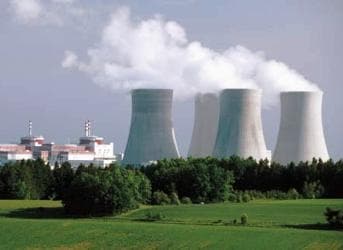To build a car, basically you need a wheel at each corner, after which you can do what you like. Flexibility comes in how you use the vehicle.
For nuclear power, the reverse of that truism applies. There are many, many ways of building a reactor and fueling it. But its purpose is singular: to make electricity. And making electricity is done in the time-honored way, using steam or gas to turn a turbine attached to a generator.
Around the world, some 460 reactors are electricity makers. Even allowing for events like the tsunami which struck Fukushima Daiichi, they are statistically the safest and most reliable electricity makers.
Yet they are large and built one at a time; one-offs, bespoke. They rely predominantly on two variations of a technology called “light water,” originally adapted from the U.S. Navy. This has left no room for other designs, fuels and materials.
Now there is a new movement to design and build smaller reactors that are not as wedded to the light water technology, although that is still in the game.
Related article: Nuclear Power Opportunities Move East
The U.S. Energy Information Administration calculates the demand for electricity will double by 2050, which means that the demand for nuclear-generated electricity with its carbon-free attributes should soar.
To understand the heft of a nuclear plant, which range from about 900 to 1,600 megawatts of electrical output (MWe), one needs a visual comparison. Most of the windmills that are now seen everywhere generate 1 MWe, or a little more when the wind is blowing. So it takes 1,000 or more windmills to do the job of just one nuclear power plant. That stark fact is why China, in environmental crisis, has the world’s largest nuclear construction program.
But the days of the behemoth light water reactor plants may be numbered.
The challenge comes from what are known as small modular reactors (SMRs), rated at under 300 MWe. Stimulated by a total of $452 million in matching funds from the U.S. Department of Energy, the race is on for these smaller reactors. Call them the new, improved, front-wheel drive reactors.
The future for these is so alluring that eight U.S.-based manufacturers are competing for seed funding from the DOE for reactors that range in size from 10 MWe up to 265 MWe. Other countries are also revved up including Argentina, China, India, Japan, Korea, Russia and South Africa.
Whatever the design, one of the big advantages the new entrants will have is that they will be wholly or partly built in factories, saving money and assuring quality.
Related article: Will Moribund Uranium Prices Rebound?
Some designs, like those of Babcock & Wilcox (which won the first round of funding) and Westinghouse, are sophisticated adaptations of light water technology.
Others, like General Atomics’ offering, called the Energy Multiplier Module, or EM2, are at the cutting-edge of nuclear energy. It relies on a high operating temperature of 850 degrees Centigrade to increase efficiency, reduce waste, and even to use nuclear waste as fuel. It is designed to work for 30 years without refuelling, relying on a silicon carbide fibre ceramic that will hold the fuel pellets.
“The ceramic does not melt and if it is damaged, the material tends to heal itself,” says John Parmentola, senior vice president at General Atomics, which developed the Predator unmanned aerial vehicle and the electromagnetic launch system for aircraft carriers, which replaces the steam catapult.
ADVERTISEMENT
Others designs include thorium fuel instead of uranium, the use of molten salt as a moderator and coolant. Three of them, including General Atomics' design are so-called fast reactors, where a moderator is not used to slow down the neutrons as they collide with the target atoms. Think fission on steroids.
It is as though nuclear designers have thrown off the chains of legacy and are free to dream up wondrous new machines, similar to the start of the nuclear age.
By. Llewellyn King
Llewellyn King is executive producer and host of “White House Chronicle” on PBS. His e-mail is lking@kingpublishing.com.



















Having worked at one of the largest Utility's in the US, one which operates a nuclear facility, as well as having a background in manufacturing, I must question the faith you place in having these competing objectives marry well together.
Saving money, sadly, wins every time over safety. Given the huge potential consequences when things go wrong at NPPs, saving money should not even be on the list of considerations if you want to maintain an environment suitable for cell based organisms to survive. If Fukushima-Daiichi isn't enough to convince you of the zero margin for error principle, I wonder what will.
Ultimately, foolish people who fail to keep up with technological possibilities end up either extinct or conquered. A fitting end to the green dream, but a sad end to the innocents who believed in it.